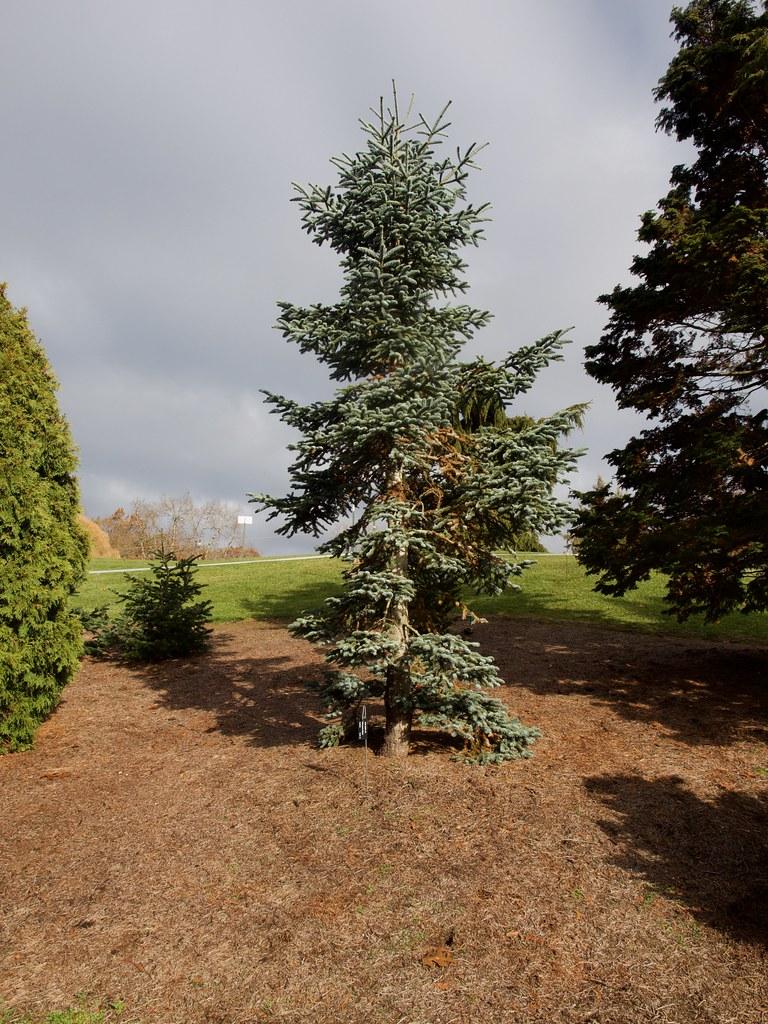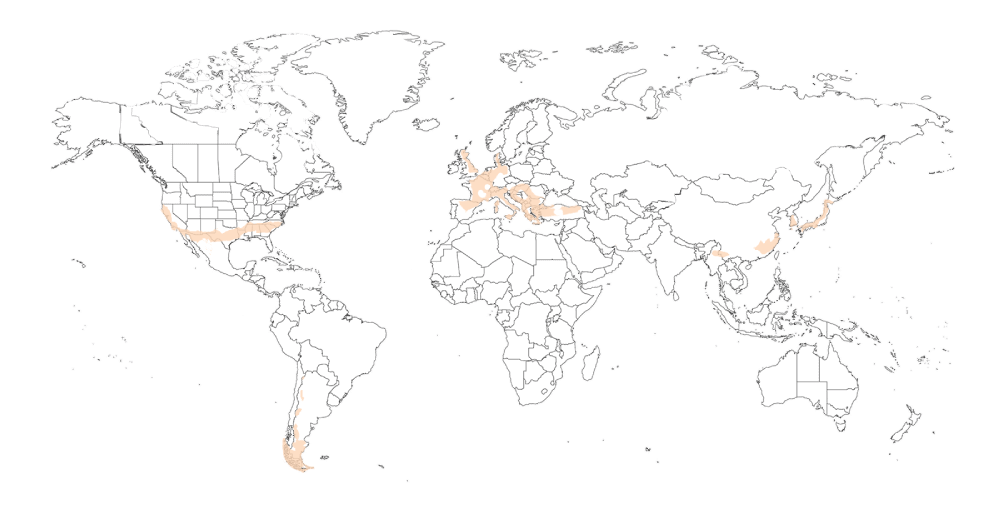

Noble Fir (Abies procera)
Also known as: Abies procera, Red Fir, White Fir.
The Noble Fir (Abies procera) is is a tall and stately evergeen tree. Its symmetrical branches are heavily laden with needles that range from a deep, glossy green to a deep blue-green. It has a thick, scaly bark and splendid foliage that make it an ideal choice for any garden. Its wide, dense growth provides shelter to wildlife, while its strong branches provide it with excellent resistance to windstorms. The Noble Fir is a long-lasting species with impressive longevity, making it a great addition to any landscape. With its majestic form, lush color, and great strength, the Noble Fir is a remarkable species that will enhance any outdoor space.
Interesting facts about the Noble Fir:
- Native to the Pacific Northwest: The Noble Fir is native to the Cascade Range and the Coastal Range of the Pacific Northwest of the United States. It thrives in the moist, cool climate of this region, particularly at elevations between 300 and 1,500 meters (1,000 to 5,000 feet).
- Popular Christmas Tree Choice: Renowned for its beauty, the Noble Fir is one of the most popular Christmas tree choices. It is prized for its symmetrical shape, sturdy branches, and long-lasting needles, which make it ideal for holding heavy ornaments and decorations.
- Tallest Fir Species: The Noble Fir is one of the tallest species of fir, capable of reaching heights up to 70 meters (230 feet). Its impressive stature adds to its grandeur and makes it a dominant species in its native forest habitats.
- Unique Needle Arrangement: The needles of the Noble Fir are unusually arranged in a spiral around the branch, which gives the branches a full, lush appearance. The needles are bluish-green with a silvery sheen, contributing to the tree’s attractiveness.
- Large and Distinctive Cones: The cones of the Noble Fir are among the largest of all the fir species, growing up to 23 centimeters (9 inches) long. They are cylindrical and upright, with distinctive bracts that protrude beyond the scales, giving them a unique appearance.
- Wood and Lumber Use: The wood of the Noble Fir is highly valued for its strength and even grain, making it a popular choice for construction and lumber purposes. It is also used in the production of paper and pulp.
- Ecological Importance: The Noble Fir plays a vital role in its ecosystem. It provides habitat for wildlife, including birds and small mammals. The dense forests formed by Noble Firs are important for maintaining the ecological balance and health of the Pacific Northwest forest systems.
Plant care guide:
Watering
Noble Fir (Abies procera) should be watered moderately and regularly, with an approximate frequency of once a week. The amount of water that should be applied should be enough to keep the soil evenly moist but not waterlogged. When watering, water deeply to encourage deep root growth and make sure to penetrate the root ball of the plant. Established trees can withstand occasional drought, however newly planted trees may require more frequent watering until they become established.
Sunlight
Noble Fir plants require full sunlight for much of the day during the peak growing season, which usually occurs during the summer months. Sunlight is essential for proper growth and development of the plant, and this species should be exposed to direct sunlight for between 6-8 hours each day. During the winter months, the amount of sunlight should be reduced to 4-6 hours each day. If Noble Firs fail to receive the proper amount of sunlight, they may struggle to develop healthy, robust foliage and overall growth.
Pruning
Noble Fir should be pruned in late winter or early spring. Pruning should be minimal, focusing on removing any dead, damaged, or diseased branches. If needed, growing tips can be removed to maintain desired size, shape, and angle of branching. Avoid cutting branches through heavily burdened areas - these areas should be thinned out instead. In addition, limit the amount of pruning to no more than 10% of the foliage each year to prevent possible dieback or disease problems.
Plant information:
- Family: Pinaceae
- Type: Tree
- Height: ~27.43 meters
- Cycle: Perennial
- Growth Rate: Low
-
Anatomy:
- Trunk: brown, light-brown, white-brown
- Leaves: dark-green, green
- Branches: brown
- Branch: brown
- Care Level: Medium
-
Watering:
- Average
- Every 7-10 days
- Sunlight requirement: full sun
- Pruning:
- February, March, April
- Propagation: Seed Propagation, Cutting, Grafting Propagation, Layering Propagation, Air Layering Propagation
- Attracts: Squirrels, Birds
- Soil: Loamy Rocky
- Origin: United States, Canada, Mexico, Central America, South America
- Seeds: No
- Drought Tolerant: No
- Salt Tolerant: No
- Thorny: No
- Invasive: No
- Tropical: No
- Indoor: No
- Flowers: Yes
- Cones: Yes
- Fruits: No
- Edible Fruit: No
- Leaf: Yes
- Edible Leaf: No
- Cuisine: No
- Medicinal: Yes
- Poisonous to Humans: No
- Poisonous to Pets: No

Sources & more information:
Content is based on public databases such as the KEW Plants of the World database, among others. Please double-check all information. "About Plants" does not take responsibility for any inaccuracies.
